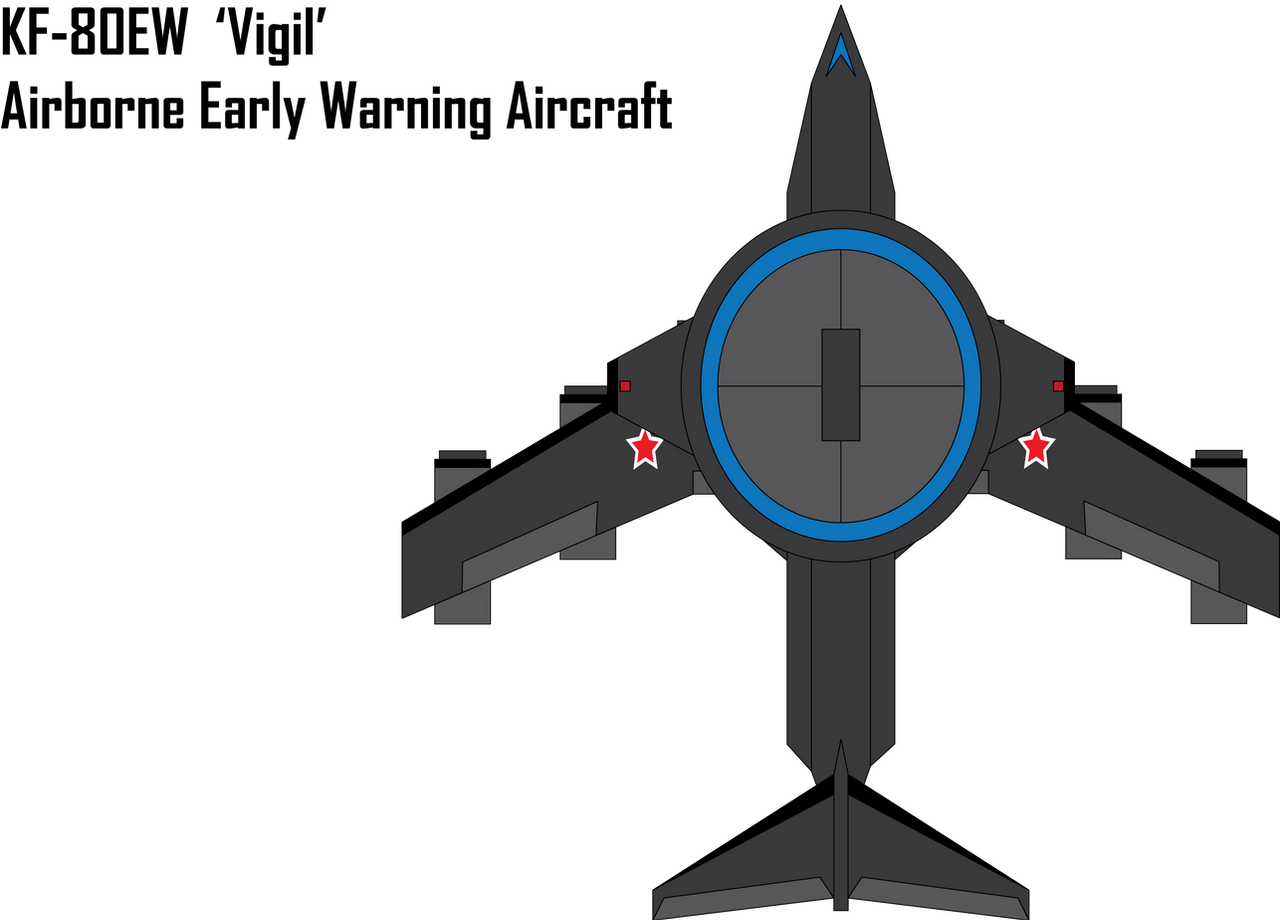HOME | DD
 Target21 — KF-80EW 'Vigil' AWACCS
Target21 — KF-80EW 'Vigil' AWACCS

#aew #airborne #aircraft #airforce #airplane #awacs #early #future #galactic #interstellar #irs #plance #plane #republic #scifi #singapore #vigil #warning #ancerious #kf80ew
Published: 2019-01-07 11:58:42 +0000 UTC; Views: 1908; Favourites: 19; Downloads: 14
Redirect to original
Description
OverviewBuilt on the KF-80C Atlas II Airlifter airframe, the KF-80EW 'Vigil' is an early warning aircraft developed by placing a large rotodome on the Atlas II airframe. Its mission is to detect enemy aircraft and ground forces from long ranges and update their positions on the battle network for military commanders to better plan and coordinate attacks. Its powerful communications equipment and battlespace management technology also make it a popular command center for commanders to coordinate a planet's local air, ground and naval forces in a local regional theatre.
Much like other deriatives of the Atlas II airframe, the KF-80EW properly came about in 2088 when the KF-80C was upgraded with metallic hydrogen engines, allowing it to conduct operations in low-orbit. This galvanised the KF-80EW's introduction, seeing as military commanders could field it for recon missions in space where it is generally safe from conventional anti-air munitions. From the Markenn War to the Third April Fools War, the KF-80EW served strictly in support roles, helping IRS forces to locate the enemy and evade their attacks. There are currently plans to assemble these recon planes in IRS-occupied Capitol territories in order to provide surveillance on rogue units and insurgent activity.
Equipment
A strictly support craft, the KF-80EW has no armament to speak of. It does however, has a multitude of powerful sensors and avionics paired with state of the art command, control and communications networking equipment for efficient and up-to-date battlefield management. Within the rotating radome lies the heart of the Vigil's detection capability, a Mark V Phased Electromagnetic Variable Frequency Array (PEVFA) sensor. PEVFA operates similarly to the 21st Century phased arrays, but with greater versatility and detection capabilities as PEVFA can switch between a spectrum of electromagnetic waves rather than using only a radio wave. The Mark V PEVFA can detect, locate and track ground and airborne targets within a 1000km radius and can distinguish them from ground clutter by the use of additional secondary sensors. LIDARs, pulse radars, thermal imaging cameras, mesonscopes and gravimetric sensors accompany the PEVFA as specialised instruments to detect different types off signatures.
Armor and Defensive Systems
Like the Atlas II, armor is skewed in favour of maximising speed and tonnage. It has thin layers of TACAM III armor with which it can survive autocannon, flak, RPGs and light DEWs but anything with dedicated anti-air weapons can easily bring it down. It does however come equipped with chaffs and plasma flares for deflecting incoming enemy missiles. With its enormous computing power at its disposal, it can switch to intensive ECM operations jamming enemy fire control systems in a wide area, launching cyberattacks against enemy networks, intercepting and blocking communications and sending out false signals to enemy guidance systems. It would take more than conventional surface-to-air missiles to take down the Vigil.
Power, Mobility and Propulsion
Being based on the Atlas II airframe, the Vigil has identical specifications. It can move at top speeds of Mach 3 in atmosphere and around twice as fast in low-orbit with the aid of a total of six powerful metallic hydrogen engines. These engines are fed by a single central fuel tank located in the fuselage. Power is provided by 4 electro-plasma reactors which draws electricity from the ions in the plasma fuel.
























